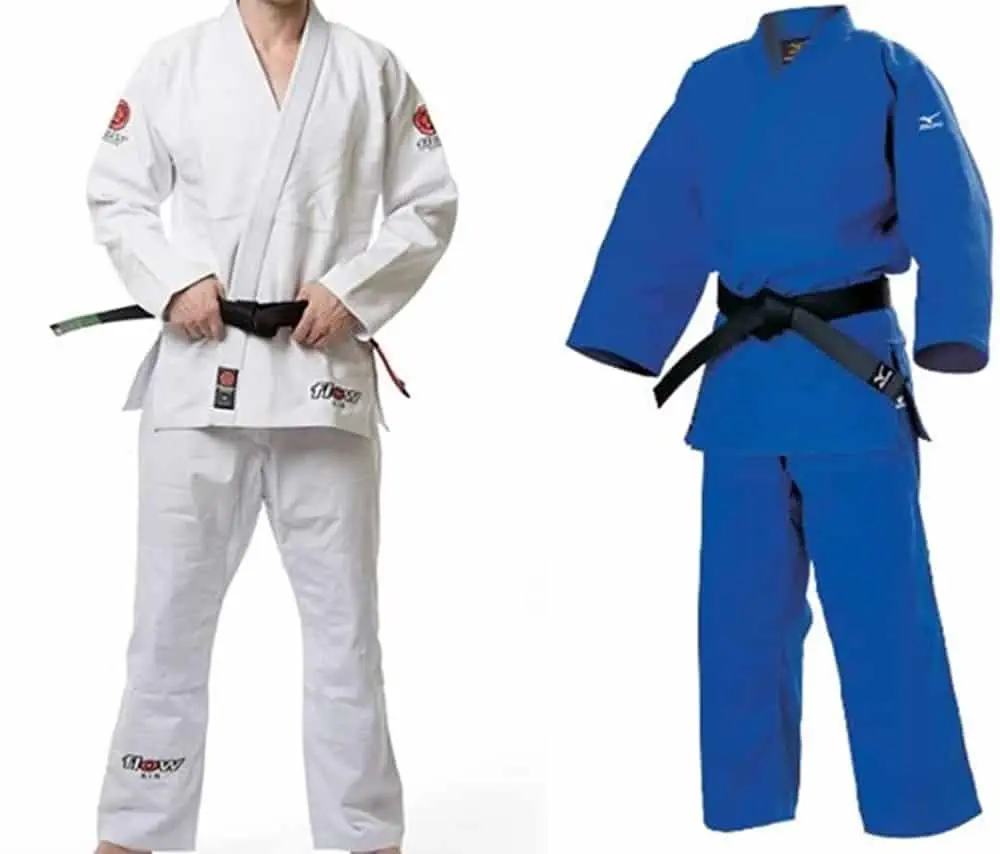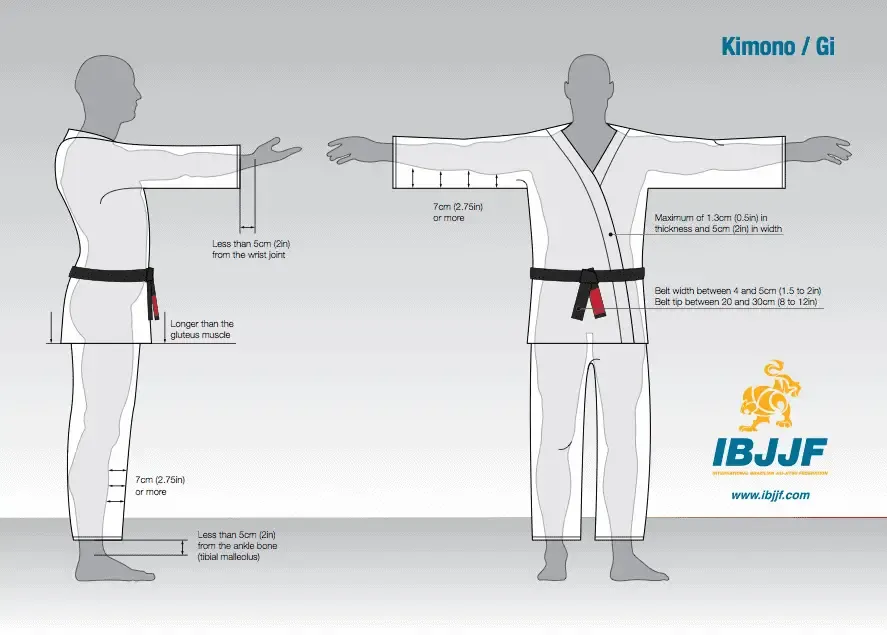If you train in either judo or BJJ, or looking to try them out, you probably wondered at some point: What are the differences when it comes to judo gi vs BJJ gi, are they similar in any way?
The main difference between a judo gi and a BJJ gi are the fit and weight of the garment.
Although judo gis and BJJ gis look similar at first glance, they are actually quite different in many ways.
Let’s explore this further in the article.

Table of Contents
Judo Gi vs BJJ Gi: What Are the Similarities?
First things first, they are both a type of martial art uniform that’s worn during practice or competition. They both come with a jacket top, which needs to be worn with a belt that represents your level, and drawstring pants that are usually lighter than the top.
The material is either 100% cotton, or cotton blend with polyester. They Come in either single weave, double weave or more recently pearl weave and gold weave.
That’s about it, the similarities pretty much end here.
Judo Gi vs BJJ Gi: What Are the Differences?
Contrary to popular belief, there are actually more differences between a judo gi and a BJJ gi than the similarities. Here are some of the most notable differences between the two.
Fit
This is probably one of the biggest differences between a judo gi and a BJJ gi. For starters, judo gis fit baggier and looser. They have wider sleeve openings, wider leg openings, longer skirt, also thicker, heavier collar and lapels.
Whereas the BJJ gis tend to have a slimmer profile, and a more tapered fit. With tighter cuffs on both the jacket and pants, shorter skirt that only comes down to just above the tailbone, along with thinner and lighter collar and lapels.
Color
Judo gi colors are pretty straight forward. Most brands only offer white and blue, as only these two colors are allowed in competitions, and most clubs would only allow white and blue gis. Couple of brands do offer black judo gis, but personally I’ve never seen anyone wearing a black judo gi.
On the other hand, BJJ competitions only allow white, blue and black gis. Although a lot of brands offer multiple colors like grey, purple, green, and even pink. If you plan to compete in the future though, I suggest you stick with the basic colors that are allowed in competition.
Material, Weight and Thickness
Traditionally, judo gis were made with 100% double weave cotton, thick, heavy and durable. While this type of gi is great for competition, as it’s harder for your opponent to grab and hold on to, it’s an absolute nightmare if you train in a hot environment.
That aside, it’s also not the most comfortable to wear, and pain in the backside to carry around due to the sheer weight of it.
Modern judo gis have actually become much lighter. They now also come in single weave made with 100% cotton, which is great for training, if you live in a place with hot summers. You can learn more about the best judo gis for beginners here.
A lot of brands also offer judo gis in cotton and polyester blend, which is again great for training. While it’s not as good compared to 100% cotton when it comes to breathability, it makes up for it with the enhanced durability.
BJJ gis are generally lighter, made with either 100% cotton or cotton and polyester blends. Although BJJ gis tend to have thinner weave than judo gis, they are actually pretty durable, as they are designed to withstand gripping and pulling.
There are myriad options available on the market when it comes to BJJ gis, here is our list of the best BJJ gis for beginners after hours of research, trial and error. Also check out our list of the best BJJ rash guards, if you intend to wear one under your gi want to compete in no gi BJJ.
Style
If you put a judo gi and a BJJ gi side by side, the style difference is probably one of the most obvious.
Judo gis are simple and minimalistic, with very hardly any branding. While BJJ gis can be more “flashy” if you will, with multiple patches placed on prominent places, and even contrasting colored stitches with some brands.
Can I Use Judo Gis for BJJ or Vice Versa?
You can definitely use a judo gi for BJJ training, while using a BJJ gi for judo training really depends on the school you train at.
As for competition, BJJ gis are not permitted in most judo competitions, especially the ones under IJF. You can wear judo gis in certain BJJ competitions, as long as they meet the measurement requirements, for example for national and international competitions under IBJJF, the gis must meet below requirements.

I do not recommend you wear a judo gi for a BJJ competition though.
The baggy sleeves and long lapels in a judo gi do play a role in certain chokes in BJJ, For instance, the baggier sleeves in judo gis will make it slightly easier to set up “ezekiel choke”. While the longer lapels will also aid in setting up the “garrote choke”.
But for most BJJ competitions, you’re required to weigh in with the gi on. The thicker weave judo gis tend to weigh much heavier, which does not help when you try to fight in a weight class against people that are your size.
Another reason being judo gis are not as lightweight and flexible as BJJ gis, which not only hinders your movement, but also makes it harder to escape from bad positions.
Final Thoughts
As mentioned in the beginning of the article, when it comes to judo gi vs BJJ gi, there are really more differences than similarities.
The only time I think it’s OK to interchange is if you already own a single weave judo gi, you should be fine to use it for BJJ training. Or if you are under a super tight budget, and just want a cheap gi to try out either BJJ or judo, you can of course buy a cheap single weave judo gi, as judo gis are generally cheaper than BJJ gis.
In most cases though, you’ll be better off sticking with a gi that’s designed for the specific sport, whether it’s judo or BJJ.